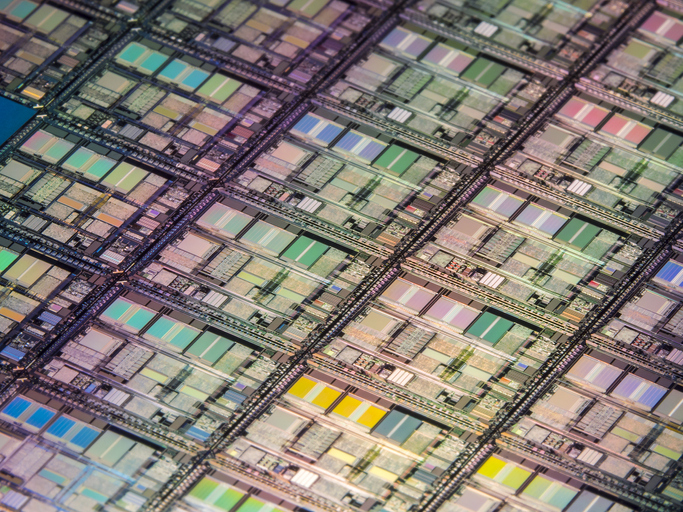
“If we don’t do it here, it’s going to happen in China, it’s going to happen in Taiwan, or it’s going to happen in Europe.”
If the United States wants to reclaim leadership in the semiconductor industry, there will need to be serious investment in manufacturing capacities, research and development, as well as human capital, leaders warned during a panel event hosted by the Hudson Institute on Thursday.
“We have the talent and the spirit to drive innovation. We need help and support … to invigorate this industry, both in the space of manufacturing as well as R&D,” said Mukesh Khare, Vice President of Hybrid Cloud at IBM Research during the Hudson Institute’s “Maintaining US Semiconductor Leadership” panel discussion on Thursday.
Moderated by Thomas J. Duesterberg, a Senior Fellow at the Hudson Institute, the panel discussion included leaders from both the technology and policymaking spaces concerning chip production in the U.S.
The discussion took place in front of the backdrop of recent chip shortages and production slowdowns in downstream industries. In addition to costing American industries billions of dollars already this year, the chip shortage has also severely impacted the job market with thousands of American manufacturing workers out of a job.
Panelists were all in agreement that the answer to these issues is increased government spending in the American semiconductor industry. “This is a capital-intensive business…. Having government incentives is one element of ensuring that this business continues to thrive,” argued Keyvan Esfarjani, Senior Vice President and General Manager for Manufacturing and Operations at Intel.
“The focus has to be on bolstering the US semiconductor industry,” said Mira Ricardel, Principal of the Chertoff Group. Ricardel explained that investments need to be focused on “making sure the entire ecosystem … is supported in a US and industry partnership.”
As it stands right now, American manufacturers are reliant on foreign manufacturers for legacy semiconductors, which are more simple semiconductor designs needed for things such as automobiles and laptops. “The legacy capacity is something that places like China … have sort of been thriving on,” said Esfarjani.
In order to reposition America in the semiconductor hierarchy and solve the issues currently plaguing American manufacturers, panelists insisted government support is needed. “If you’re not continually building the capacity and upgrading old capacity and continuing to stay at the edge, you’re out of the game,” said Jay Lewis, a partner at Microsoft’s Silicon Projects.
And right now, the U.S. faces falling out of the game.
“If you pick the wrong road to take here … you are falling behind, and it could take you years to catch up,” said Esfarjani.
Considering that the fallout from the pandemic and the subsequent surge in demand has already wreaked havoc on the American economy, we do not have years to lose.
Luckily, there are two pieces of legislation in the pipeline that seemed to bring panelists some hope for the future of the American semiconductor industry: the CHIPS for America Act and the Endless Frontier Act.
The two serve as a kind of dual investment in the semiconductor industry, where the CHIPS for America Act establishes direct investments and incentives for American-made semiconductors, while the Endless Frontier Act funds research and development in the broader technology sector.
“If you are just doing the research and then things are made elsewhere, you are losing a lot of the benefit of that research,” said Lewis. With these two pieces of legislation acting in concert, American chip manufacturers have a real chance to position themselves at the forefront of the industry.
To add to the legislative front, President Biden met with semiconductor industry executives this month. Part of the Biden administration’s response to the ongoing chip shortage includes a proposed $50 billion to support chip manufacturing and research in the American Jobs Plan.
As it stands right now, technology leadership plays a huge role in determining America’s economic success. And, as Ricardel explained, “semiconductors are foundational to technology leadership.”
“This is an operation that needs very reliable utilities. You need to have power, water…all of the supply chain around equipment and materials – that entire ecosystem has to go hand in hand.”
Keyvan Esfarjani, Senior Vice President and General Manager for Manufacturing and Operations at Intel
If the U.S. is going to rebound from the pandemic and the current chip shortage, we are going to need to stake our claim in the semiconductor industry.
“Really,” said Lewis, “this investment is really needed just to have a level playing field.” In other words, the CHIPS for America Act and Endless Frontier Act, as well as Biden’s American Jobs Plan, serve as good starting points. “It is very important for policymakers to understand that this is not a one-time investment that is required,” said Lewis.
Investments in the semiconductor industry offer the U.S. a chance to greatly expand its manufacturing capacities. The reason funding for this industry is included in the American Jobs Plan is because it’s a critical component of American infrastructure looking towards the future.
Esfarjani explained this when he said, “To run a semiconductor operation … it’s not just the company itself…. It’s the infrastructure that you need. This is an operation that needs very reliable utilities. You need to have power, water…all of the supply chain around equipment and materials – that entire ecosystem has to go hand in hand.”
To put it simply, the U.S. needs to improve its domestic manufacturing capacities for semiconductors. To help us get there, we are going to need “incentives, talent, [and a] strong regulatory environment,” said Esfarjani. Government spending offers a way to get there.
“If we don’t do it here,” he said, “it’s going to happen in China, it’s going to happen in Taiwan, or it’s going to happen in Europe.”
